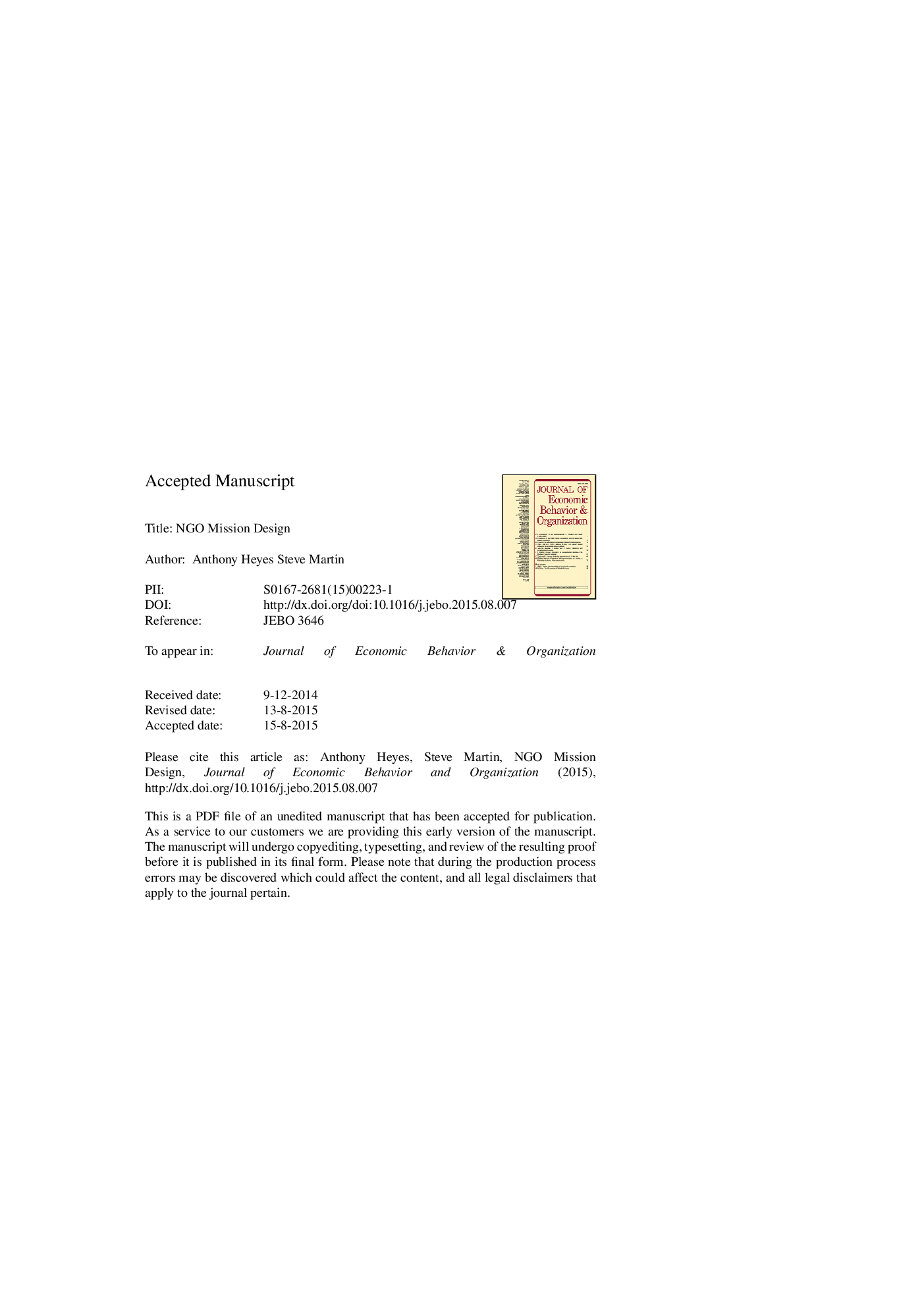| Article ID | Journal | Published Year | Pages | File Type |
|---|---|---|---|---|
| 7242904 | Journal of Economic Behavior & Organization | 2015 | 36 Pages |
Abstract
NGOs compete in mission statements. Opportunities for impact vary across issues-NGOs with broader missions expect to execute higher-impact projects but provide less precision to donors as to the sorts of projects that will be funded. This matters if donors have preferences amongst issues. The mission-design problem faced by an impact-motivated NGO is analyzed. Interestingly, expected donations are non-monotonic in mission-width. A monopoly NGO engages in “donor-stretching,” choosing a mission statement that includes issues not preferred by any of its donors, but still narrower than socially desirable. Under free entry, issue-widths are strategic complements amongst NGOs. In equilibrium there are too many NGOs, each with too narrow a mission. The issue-space is exactly donor-covered (all donors will have an NGO they wish to give to) but issue over-covered (mission statements overlap). Expected NGO impact is higher for issues at the periphery of any particular NGO's issue-domain, which is socially inefficient.
Related Topics
Social Sciences and Humanities
Economics, Econometrics and Finance
Economics and Econometrics
Authors
Anthony Heyes, Steve Martin,
